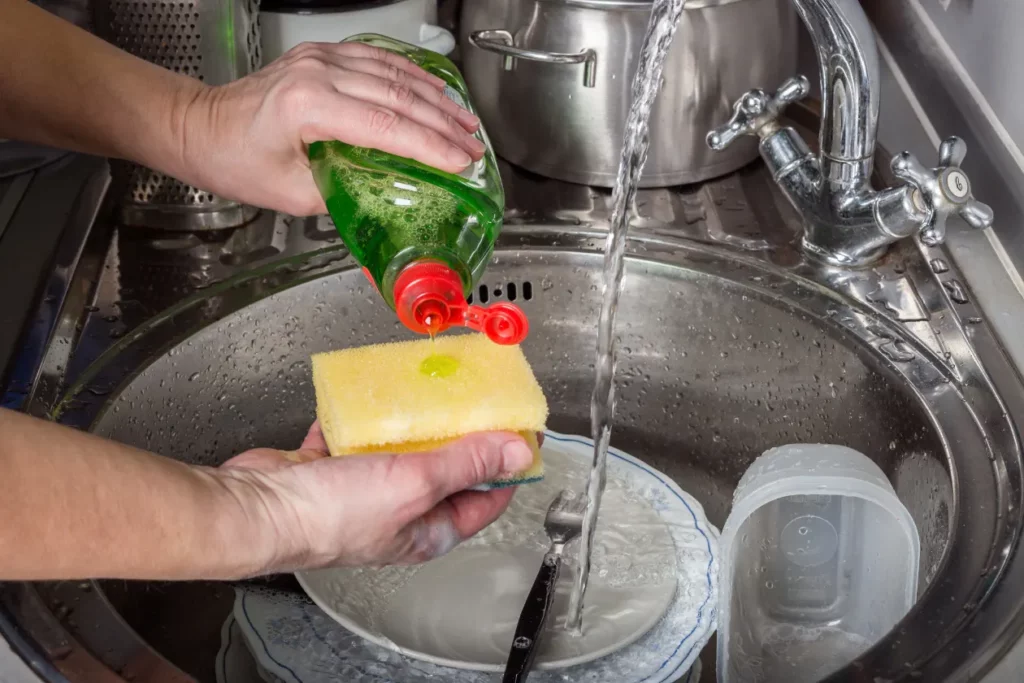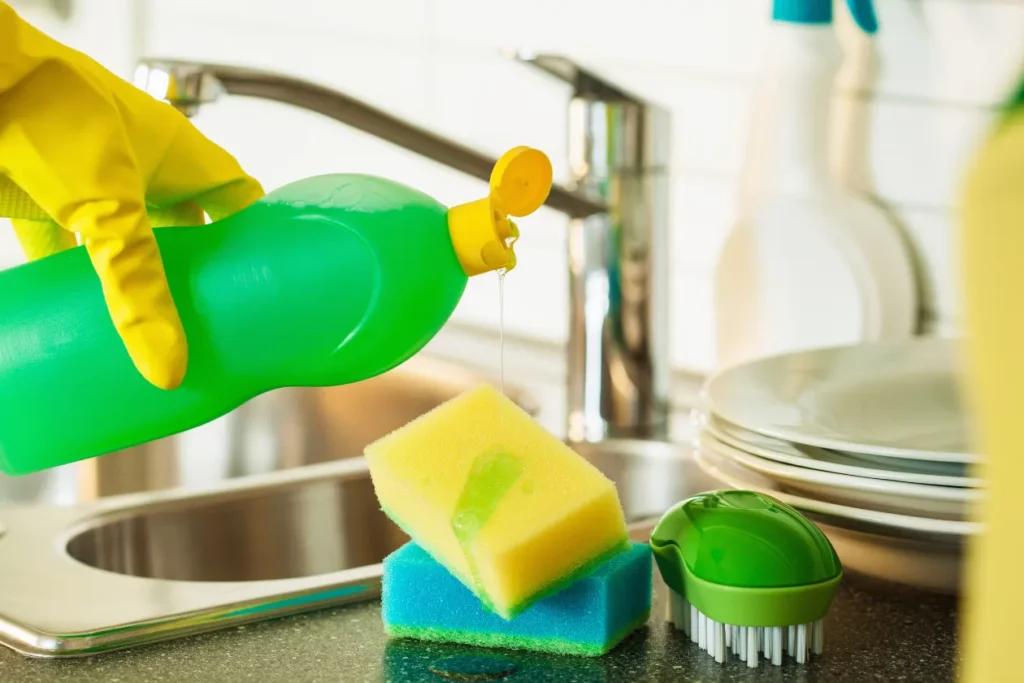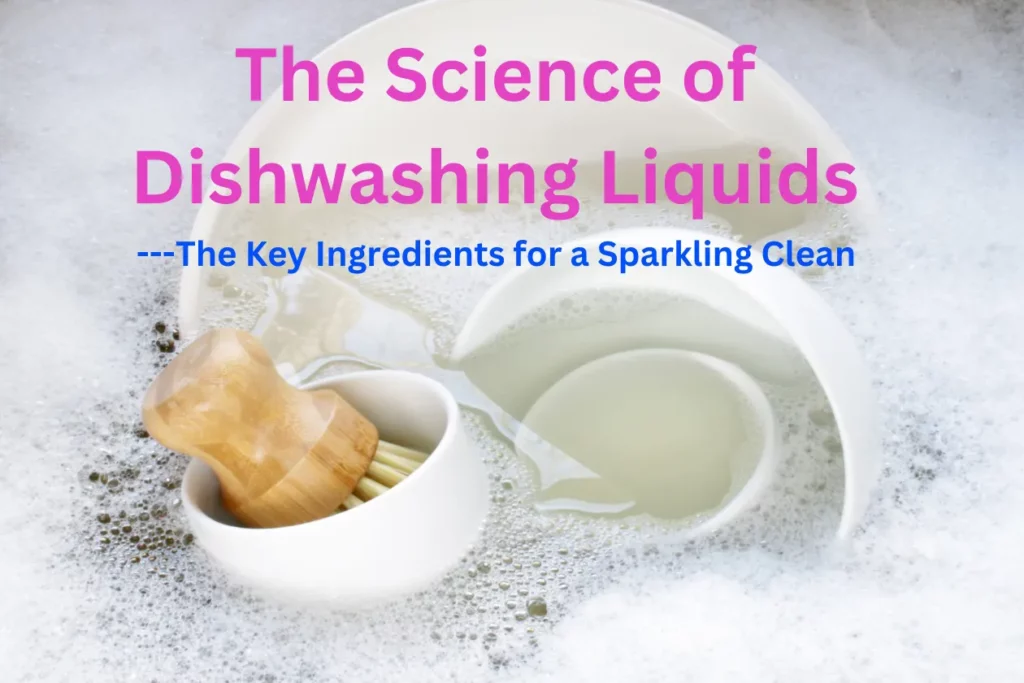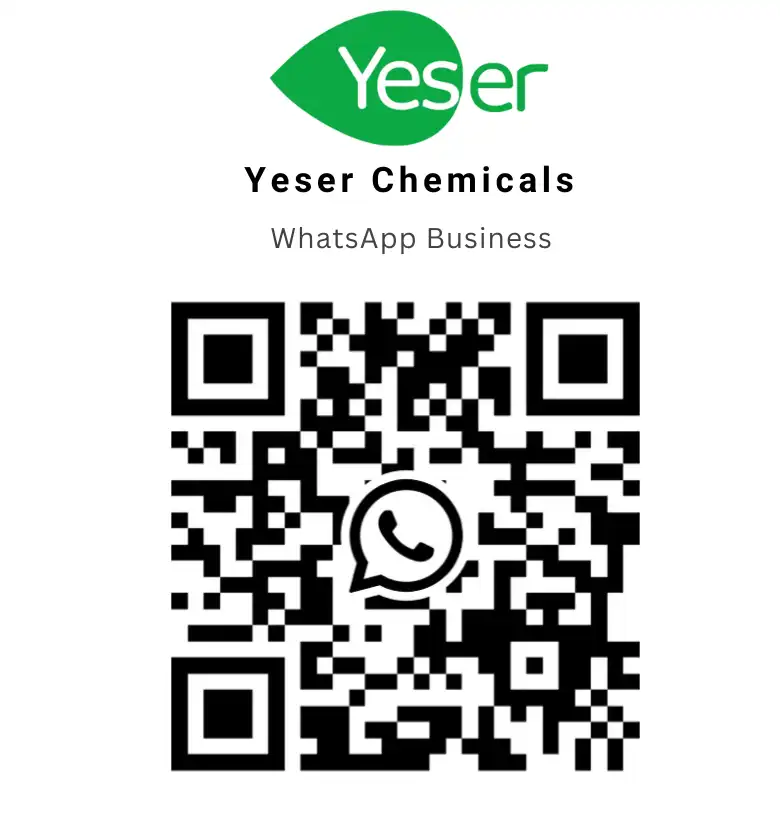Dishwashing liquid is an essential household item that helps maintain cleanliness and hygiene. It’s used to remove food residues, grease, and stains from dishes, cutlery, and cookware, ensuring a clean and safe dining experience for you and your family. Dishwashing liquid is a highly consumed item all over the world, and its production and sales contribute to a large and thriving industry.
The effectiveness of dishwashing liquid relies on its carefully formulated combination of raw materials. This article will delve into the components that make up dishwashing liquids and explore their roles in providing powerful cleaning action.
I. Surfactants: The Cornerstone of Dishwashing Liquids
Surfactants are the primary cleaning agents in dishwashing liquids, responsible for cutting through grease and breaking down stains. Among the 4 types of surfactants, Cationic surfactants are rarely used in dishwashing liquids.
A. Anionic Surfactants
These surfactants create negatively charged particles in water, which help remove dirt and grime. Anionic surfactants are the most crucial source of cleaning power in dishwashing liquids, and their usage and cost often make up the highest proportion of the overall formulation. The following are the most prevalent selections for dishwashing liquid formulations:
- Sodium lauryl sulfate (SLS): A widely used plant-derived surfactant known for its foaming properties and cleaning ability.
- Sodium laureth sulfate (SLES): A close relative of SLS, SLES offers a milder cleaning action with reduced skin irritation potential.
- Linear alkylbenzene sulfonate (LAS): A high-performance Petro-based surfactant commonly used in dishwashing liquids due to its effectiveness in removing grease and dirt.
B. Nonionic Surfactants
These surfactants don’t carry any electrical charge, making them less sensitive to water hardness and providing a gentler cleaning action. The following are the most prevalent selections for dishwashing liquid formulations:
- Alcohol ethoxylates (AEO): A group of nonionic surfactants derived from fatty alcohols, known for their excellent grease-cutting capabilities. AEO-7 and AEO-9 are the most common examples in this category.
- Alkyl polyglucosides (APG): Plant-derived surfactants that offer a more eco-friendly alternative to traditional surfactants, with good biodegradability and low toxicity.
- Cocamide DEA(CDEA): A surfactant derived from coconut oil, known for its foam-boosting properties and ability to work synergistically with other surfactants to build viscosity and enhance cleaning performance.
C. Amphoteric Surfactants
Amphoteric surfactants can have both positive and negative charges, depending on the pH. They provide a mild cleaning action and boost foam production. The following are the most prevalent selections for dishwashing liquid formulations:
- Cocamidopropyl betaine (CAPB): A versatile surfactant that enhances foam stability and helps reduce the irritation potential of anionic surfactants.
- Lauramine oxide: A popular amphoteric surfactant that contributes to grease removal and foam stability.

II. pH Adjusters and Buffers
These ingredients help maintain the optimal pH for cleaning and ensure the stability of the dishwashing liquid.
- Sodium hydroxide: A strong alkaline compound used to adjust the pH of dishwashing liquids.
- Sodium carbonate: A buffering agent that helps maintain a stable pH and enhances cleaning performance.
- Citric acid: A weak organic acid used to adjust the pH and improve the overall cleaning efficiency.
III. Grease-cutting Agents
These components enhance the grease-removal capabilities of dishwashing liquids.
A. Solvents for Grease Removal
Solvents help dissolve grease and loosen stubborn stains.
- Ethanol: An alcohol-based solvent that improves cleaning performance and helps dissolve grease.
- Isopropanol: Another alcohol-based solvent used for its grease-cutting properties and quick evaporation.
B. Enzymes for Stain Breakdown
Enzymes break down food residues and protein-based stains, making them easier to remove.
- Protease: An enzyme that breaks down proteins, effectively removing food residues and stains.
- Amylase: An enzyme that targets starch-based stains, breaking them down into simpler sugars for easier removal.
IV. Preservatives
Preservatives prevent the growth of bacteria and mold in dishwashing liquids, ensuring their safety and longevity.
- Parabens: A group of synthetic preservatives used to protect dishwashing liquids from microbial contamination.
- Methylisothiazolinone (MIT): A widely used preservative that prevents bacterial and fungal growth.
- Benzisothiazolinone (BIT): Another effective preservative used in dishwashing liquids to inhibit microbial growth.
V. Fragrances and Colorants
Fragrances and colorants are added to dishwashing liquids for aesthetic and sensory appeal.
- Synthetic fragrances: These are man-made scents that give dishwashing liquids a pleasant smell.
- Natural essential oils: Plant-derived fragrances that offer a more eco-friendly and natural alternative to synthetic fragrances.
- Dyes and pigments: Added to dishwashing liquids to give them a visually appealing color.
VI. Thickeners and Rheology Modifiers
These ingredients help adjust the viscosity and flow properties of dishwashing liquids.
- Sodium chloride: Commonly known as table salt, sodium chloride is used to thicken dishwashing liquids.
- Hydroxypropyl methylcellulose (HPMC): A cellulose-based thickening agent that helps control the viscosity and consistency of dishwashing liquids.
- Xanthan gum: A natural thickening agent derived from fermented sugars that provides a smooth and stable consistency.

Eco-friendly and Natural Alternatives
Eco-friendly dishwashing liquids use more sustainable and biodegradable ingredients.
- Plant-derived surfactants: Environmentally friendly alternatives to traditional surfactants, such as alkyl polyglucosides (APG).
- Essential oils as fragrances: Natural scents derived from plants, offering a more sustainable option for fragrances.
- Biodegradable preservatives: Preservatives with minimal environmental impact, such as ethylhexylglycerin and potassium sorbate.
Regulations and Standards
Dishwashing liquid ingredients must comply with guidelines and regulations to ensure safety and environmental protection.
- FDA guidelines: The U.S. Food and Drug Administration provides guidelines for the safety and labeling of dishwashing liquids.
- International regulations: Dishwashing liquid ingredients must meet the safety standards set by various international organizations and governments.
- Safety and environmental concerns: Manufacturers must adhere to safety and environmental standards to minimize the potential for harm to humans and the environment.
Summary
Dishwashing liquids are a staple in households worldwide, offering efficient cleaning and hygiene for dishes, cutlery, and cookware. A variety of carefully selected raw materials come together to create the powerful cleaning action of these liquids. This article has explored the key components, including surfactants, pH adjusters, grease-cutting agents, preservatives, fragrances, colorants, and thickeners. By understanding the roles and interactions of these ingredients, we can appreciate the science and expertise behind the formulation of dishwashing liquids. As consumers become more environmentally conscious, eco-friendly alternatives continue to gain popularity, offering sustainable and biodegradable options for effective cleaning.
Frequently Asked Questions
A. How do different types of surfactants affect the performance of dishwashing liquids?
Different surfactants contribute various properties to dishwashing liquids. Anionic surfactants provide strong cleaning power and foam formation, while nonionic surfactants offer gentler cleaning and are less sensitive to water hardness. Amphoteric surfactants help improve the mildness of the product and enhance the performance of other surfactants.
B. What are the differences between conventional and eco-friendly dishwashing liquids?
Conventional dishwashing liquids may contain ingredients that are less biodegradable and potentially harmful to the environment. Eco-friendly dishwashing liquids use more sustainable and biodegradable components, such as plant-derived surfactants and natural fragrances. While their cleaning performance may be slightly lower than conventional products, they are still effective and better for the environment.
C. Can I make my own dishwashing liquid at home?
Yes, you can make your own dishwashing liquid at home using readily available ingredients like water, soap, and essential oils. However, homemade dishwashing liquids may not be as effective as commercial products, which are carefully formulated for optimal cleaning performance.
D. Can dishwashing liquids be formulated for specific purposes, such as antibacterial or glass cleaning?
Yes, dishwashing liquids can be tailored for specific applications by including additional ingredients, such as antibacterial agents for germ-killing action or specialized surfactants and solvents for glass cleaning.
E. How do different types of water hardness influence the effectiveness of dishwashing liquids?
Hard water, which contains high levels of minerals, can affect the cleaning performance of dishwashing liquids by reducing the effectiveness of surfactants. Nonionic surfactants are less sensitive to water hardness and can maintain their performance in such conditions.






